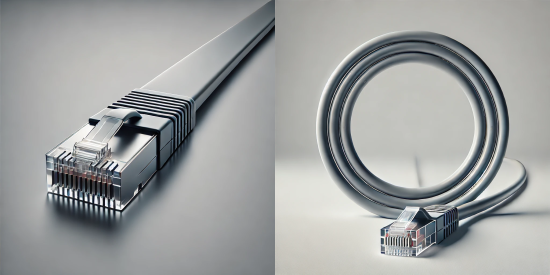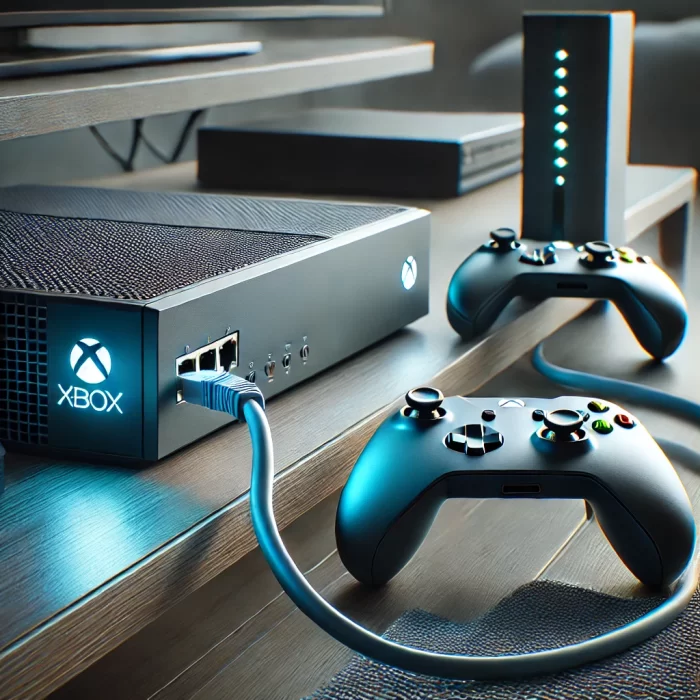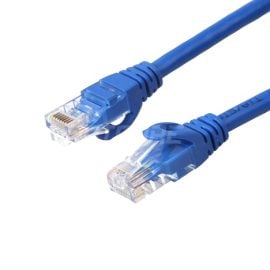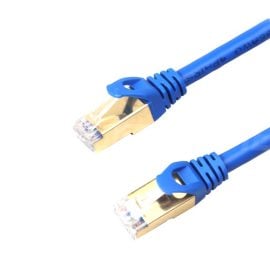Blog, Network Cabling, Networking Device
The Best Ethernet Cable for Xbox in 2025
Over the Christmas holiday, my friends and I spent much time on Xbox. It was a lot of fun, but the random network issues were truly annoying. “These providers keep bragging about how great their gigabit networks are, but gaming’s still a mess, ” he complained. However, gazing at the Wi-Fi router, I fell into deep thought—perhaps we need an Ethernet cable. If you’ve encountered a similar situation, you might also consider getting an Ethernet cable for Xbox.
A wired network offers significant advantages in terms of stability and speed compared to Wi-Fi. However, there are so many types of Ethernet cables.

How do you choose the best Ethernet cable for Xbox? This guide will be helpful.
Understanding Ethernet Cable Categories
Currently, the standard cables range from Cat5e to Cat8. Maybe you’re using Cat5 cable, but I wouldn’t recommend choosing it. The cables below cat5e might be a little bit outdated. Each cable varies in speed, bandwidth, and max length; the following table outlines these features.
| Category | Max Speed | Bandwidth | Max Length | Ideal Use Case |
|---|---|---|---|---|
| Cat5e | 1 Gbps | 100 MHz | 100 m | Most gaming setups |
| Cat6 | 1-10 Gbps | 250 MHz | 55-100 m | Most gaming setups & better experience |
| Cat6a | 10 Gbps | 500 MHz | 100 m | Future-proofing, in-wall installations |
| Cat7 | 10 Gbps | 600 MHz | 100 m | Not suitable for Xbox |
| Cat8 | 25-40 Gbps | 2000 MHz | 30 m | Not suitable for Xbox |
With so many categories and features, you need to choose the best for your Xbox. We’ll discuss how to make the right choice next.
Key Factors to choose an Ethernet Cable for Xbox
Choosing the right Ethernet cable might not be as difficult as deciding what to have for dinner because some objective factors, such as speed, length, shielding, and durability, can help you distinguish between different cables. These key factors will help you decide when choosing an Ethernet cable for Xbox.
1. Speed Requirement
The first thing to consider is whether your Ethernet cable matches the speed of your subscribed internet plan. Generally, our internet plans are usually within the 1000Mbps (1 Gbps) range. But remember, your cable category will not exceed your internet plans.
2. Cable Length
The length of your Ethernet cable directly impacts the network. As the cable length increases, signal loss and latency become more significant. So choosing the appropriate cable length is essential, especially when you need a longer cable, so you must consider a high-category cable.
3. Shielding and Interference
Various types of electromagnetic interference (EMI) affect your network performance during signal transmission. Therefore, it’s essential to consider how well your cable shields against interference. Different cable categories have various resistance levels to interference, so check the specifications.
4. Physical Durability
High-quality Ethernet cables typically have better physical durability, which provides a long lifespan. The durability of a cable depends on the materials used and its manufacturing quality. However, higher is not better in this factor; better durability may not be as flexible or resistant to bending.
5. Cost and Value
Generally, the higher-cat cable means a higher price tag, but this doesn’t always translate to a better experience. Choose a cable that fits your budget and meets your needs without overpaying for features you don’t need.
6. Flat vs. Round Cables
You may have noticed some cables are flat instead of round. What’s the difference between them? Flat cables tend to be more discreet due to their shape. Because of this, the cable is easier to hide in corners, under carpets, or along walls. They offer more flexibility for specific setups.

However, flat cables are less durable and anti-interference compared to round cables. Flat cables might be a good choice if you’re looking for aesthetics, space-saving, or short-distance wiring.
Recommended Ethernet cable for Xbox
Maybe you’re a veteran Xbox gamer, a die-hard fan of a few games, and looking to enhance your gaming experience. Or perhaps you’ve just gotten your hands on a favorite Xbox and are looking for a perfect internet cable while exploring games that suit your tastes. Don’t worry; I will explain how to pick the best cable for your Xbox with some great Xbox games.
1. Cat5e cable
Although Cat5e is the lowest category under the current standard, it supports up to 1Gbps internet speeds. In terms of network performance and durability, it can almost fulfill the networking needs of most gaming scenarios. For gamers who mainly play casual games such as Minecraft and Roblox, with shorter wiring distances and seeking affordability, Cat5e cable is a good choice.
2. Cat6 cable
If you are a loyal player of multiplayer online games like Fortnite and FC25, Cat6 cable may be the most suitable choice. Cat6 supports up to 10 Gbps speed and 250 MHz bandwidth, providing a fast and stable connection. It also provides shielded or unshielded options at a more affordable price. For most Xbox gamers, you can choose a Cat6 cable without hesitation, especially if you need to wire long distances.
-
Cat6 Snagless Shielded (SFTP) Ethernet Network Patch Cable, PVC, Blue
Price range: US$ 1.29 through US$ 17.70 (Excl. VAT)
3. Cat6a cable
The above two categories of cables can already meet the network connection needs of most Xbox gamers. However, you may plan to install permanent cable or in-wall cabling. Cat6a supports 10 Gbps speed and 500 MHz bandwidth, good performance, and a good shielding effect. If you need in-wall wiring or are ready for higher speeds, a Cat6a cable is the way to go.
-
Cat6A Snagless Shielded (SFTP) Ethernet Network Patch Cable, PVC, Blue
Price range: US$ 1.49 through US$ 22.35 (Excl. VAT)
4. Cat7 and cat8 cables
We put them together because these two are not meant for everyday environmental use and are not friendly to us regarding price and installation. Don’t pay for speed alone. Why not save some money and buy more nice games?
How to connect a wired network for your Xbox
After the chosen network cable arrives, you can prepare to make your access to a wired network, which consists of the following four main steps:
1. Connect the network cable: Plug one end of the cable into the Ethernet port on your Xbox console.
2. Connect to the network: Plug the other end of the cable into the Ethernet port on your router or modem.
3. Configure Xbox Settings: Profile & System > Settings > General > Network Settings. Select Wired Network to activate the connection.
4. Test Connection: Select Test Network Connection to ensure everything works.
FAQs
1. If my budget allows, is the higher the cable category, the better?
Not necessarily. Although the performance offered by Cat7 or Cat8 cables may seem impressive, for most gamers, Cat6 and Cat5e cables are sufficient, and Cat6a cables are only chosen for future-proofing or in-wall installation, so there is no need to ignore the need for performance!
2. Is there any difference in gaming between Xbox and wired and wireless connection?
Yes, there is. A wired connection has advantages over a wireless connection regarding network speed, stability, and low latency, especially for competitive online games or games requiring high performance.
3. Does the cable length affect the speed and stability?
Yes. Network performance usually decreases as the length of the cable increases, such as increased latency and network fluctuations. If you do need to arrange the cable over a longer distance, you can consider choosing a Cat6 cable with shielding.
4. How do you troubleshoot network problems with an Ethernet cable connection?
- Reboot your Xbox console or router and test the network after a few minutes.
- Try connecting with another cable or a free port to verify that the cable, Xbox interface, and network console interface are working properly.
- Connect to another home network or alternate network and verify on the other network if the problem is with the device or the network.
Conclusion
Overall, using a wired connection provides a more stable network for the Xbox, resulting in a better gaming experience. When choosing an Ethernet cable for your Xbox, you must consider the cable’s speed requirements, interference shielding, length, and durability.
As for the cable category, Cat5e can almost satisfy your need for a wired connection, and if you need a better network experience, you can choose a Cat6 cable. If you plan to install the cable inside the wall or prepare for the future, consider using the Cat6a cable appropriately. As for Cat7 and Cat8, there is no need to choose.
Read more:
- Short or Long Ethernet Cable: How to Choose
- How to Check & Solve Ethernet Cable Problems
- Cat5, Cat5e, Cat6, Cat6a, Cat7, Cat7a vs Cat8 Ethernet Cable, What is the difference
Reference:









